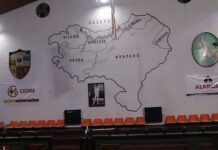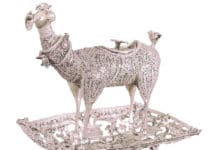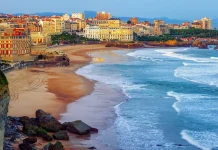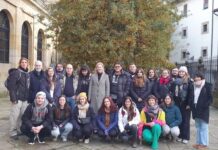This article was translated by John R. Bopp
We’ve written several articles on Basque designer Cristóbol Balenciaga, about his museum in Getaria, about the space that museums around the world dedicate to him, and about the minimization of his being Basque.
We have to recognize that all the facets of this universal Basque fascinate us. But we also have to recognize the tendency of the media and the institutions that prepare his exhibits to downplay his Basque-ness, which really gets to us. The avoidance of the quality of “Basque” with anything that isn’t negative, with Balenciaga and with many other things, has been discussed here before, in an article “The Balenciaga Museum: a museum dedicated to the Spanish designer, son of a Basque fisherman” (in Spanish). We can also find this as well in some of the information we’re getting about the exhibition about Balenciaga’s work at the Museum of Modern Art of Mexico.
There’s a tendency to forget the definition of him and his work that was given by his close friend and fellow designer Hubert de Givenchy: “He had a different vision for fashion…a strong vision, in the style of the Basque Country, with a very Basque personality.” It’s this same tendency to forget that the man grew up, both personally and professionally, in the Basque country, and that he spoke Basque.
We’re still noticing how the following idea still circulates:
“A Basque can be a fisherman, a terrorist, a ‘segalari’ or rural sportsman, a tennis player, a footballer, or even, with a bit of luck, a chef. But if you’ve composed the “Boléro” (Maurice Ravel), or you’re a genius who revolutionized the world of fashion, you can’t be Basque, they have to move you up a category, to be French or Spanish.”
We hope that the exhibition is a huge success, but we would also like it if the museumgoers knew that they’re looking at the work of a Basque man, who was born into a humble Baque family, who spoke Basque, who grew up among Basques, and who is buried in a cemetery in Getaria, overlooking the Bay of the Basques.
La Razón – 7/5/2016 – México
La elegancia de Balenciaga toma el Museo de Arte Moderno
El Museo de Arte Moderno cambió la tela de los lienzos tradicionales y desde hoy hasta el 4 de septiembre tafetanes, sedas, gasas, razos, paños, lanas y otros textiles engalanan su sala principal en la exposición Cristóbal Balenciaga, una muestra que a través de vestidos, bocetos, figurines, fotografías y pinturas da cuenta del trabajo del diseñador español.
(Continue) (Automatic translation)
El Imparcial – 29/4/2016 – México
Diseños originales de Balenciaga llegan a México
El Museo de Arte Moderno de la Ciudad de México se estrena en el mundo de la moda con una exhibición del maestro español Cristóbal Balenciaga.
“Esta es la primera exposición de moda que hay aquí en el Museo de Arte Moderno y por eso para nosotros es un doble gusto”, dijo el jueves María del Carmen Canales, jefa de colecciones del museo, quien destacó que la institución ha trabajado dos años en la realización de la muestra. “Estas piezas ya están consideradas como obras de arte y las cuidan como tal”.
(Continue) (Automatic translation)
Milenio – 7/5/2016 -México
Balenciaga o el encanto de la aristocracia
El modisto español Cristóbal Balenciaga (Getaria, 1895–Alicante, 1972) solía repetir: “una mujer no tiene la necesidad de ser perfecta ni hermosa para llevar mis vestidos. El vestido lo hará por ella”. Al conjugar la maestría técnica con la perfección estética, las creaciones del diseñador vasco ofrecieron la fórmula para hacer a una mujer bella y elegante.
(Continue) (Automatic translation)
Last Updated on May 8, 2016 by About Basque Country





























